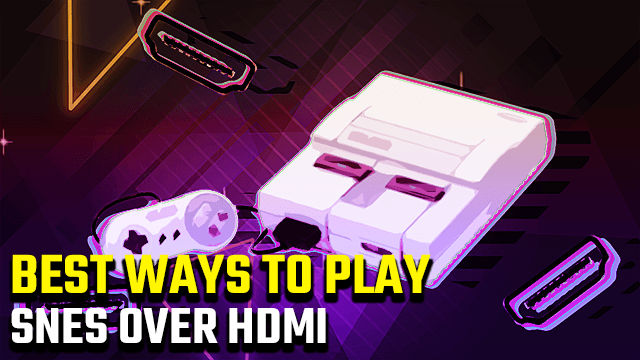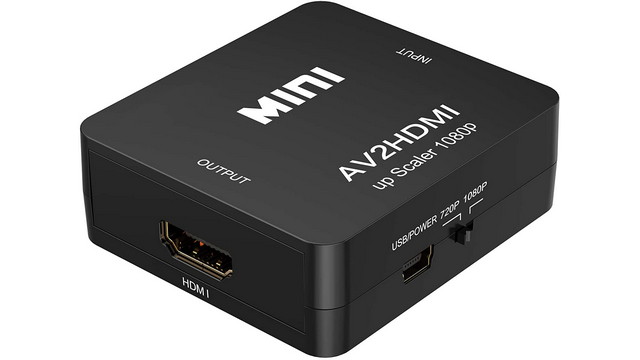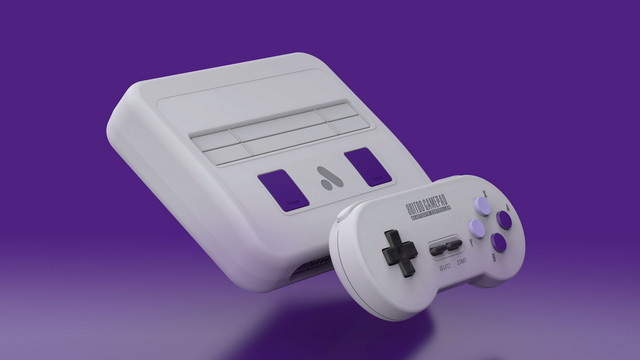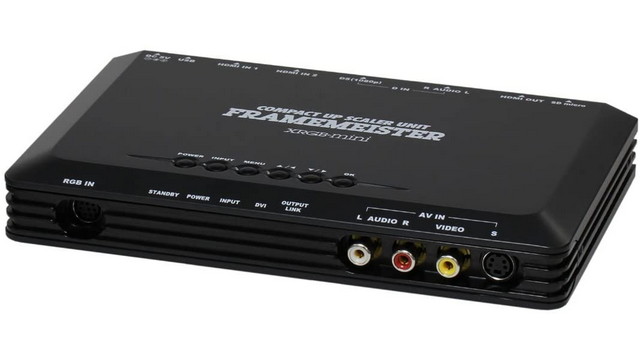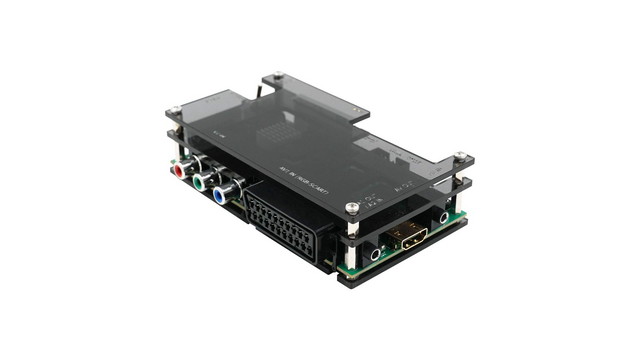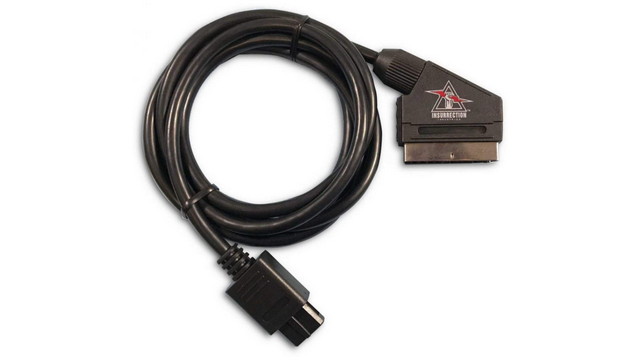Playing SNES on HDTV is no easy task. The console, in its original form, only supports RF, composite, and SCART. More and more, modern TVs are forgoing compatibility with older video connection formats and only offer the option of using HDMI. This means there’s no easy solution to playing your SNES on your HDMI TV.
Fortunately, there are a ton of solutions for playing Super Nintendo on modern TVs at every price point. You can hook up your Super Nintendo to HDMI for as low as $15-20, or as high as $300-400. How much you spend on connecting your SNES to modern TVs depends on what you’re looking to get out of the experience.
For this article, we’re focusing on the experience of playing authentic SNES cartridges. As such, we’ll only be covering solutions that allow you to play carts either on original or clone hardware.
The cheapest way to play SNES on HDTV over HDMI: Generic Composite to HDMI Converter
If you just want to connect your SNES to your TV and don’t care about things like response time or picture quality, you can go with a generic composite-to-HDMI converter. These can be found in the $10-20 range on Amazon, and do exactly what they say they do. The converters take a composite signal, the best you’ll have with the cords that came with the SNES in the US, and converts it to a digital signal your TV can decode over HDMI.
You get what you pay for when it comes to video converters, so don’t expect your SNES gameplay experience to be great when using one of these. The image quality will be relatively poor since the source is composite, and you’ll likely notice more than a little input lag as these converters aren’t very speedy. It gets the job done, and if you’re just looking to play your SNES for the sake of novelty, it’s likely enough. However, if you’re thinking of playing your SNES regularly, I recommend steering clear of this cheap solution.
Cheap way to play SNES on HDTV over HDMI: Pound HD Link Cable for SNES
The Pound HD Link Cable is a step up from the composite-to-HDMI converter and is only a bit more expensive. There is a caveat with this solution, though. Since it converts the RGB signal instead of composite video from the SNES to HDMI, it’s not compatible with a stock SNES Jr. All of the original models of the SNES will work with this cable, but if you have the smaller, late-life model, you’ll have to mod it.
While it’s a significant improvement over composite-to-HDMI, the Pound cable isn’t without issues. It has problems with saturation and contrast, so you’ll have issues with games being too dark and having blown out reds. It also only outputs video at 16:9, so you’ll have to deal with a stretched out image if your TV doesn’t have the option to reduce it to 4:3.
If you don’t want to spend big bucks to play your SNES in HDMI, I recommend the Pound cable. Adjusting your TV settings can make up for its shortcomings, and it outputs a decent-quality picture. This solution also has less input lag than a cheap composite-to-video converter, which makes platformers and other twitch games less frustrating.
Affordable way to play SNES on HDTV over HDMI: Lower-end Clone Consoles
This option is geared more towards folks that don’t already have a SNES. As time goes on, Super Nintendos are slowly rising in price, and if you’re a casual fan that just wants to play a few games, a clone console is an appealing purchase.
There’s only one SNES clone that’s worth buying if you’re looking to play SNES often, the Analogue Super NT. We’re not talking about that one (yet). We’re talking about the ones that the Chinese have faithfully manufactured for the last two decades. These GF-6970 or TCT-970-based clones aren’t the best. They contain cheap HDMI scalers which add input lag and don’t provide the most authentic experience. However, they are an all-in-one package that lets you cheaply play SNES games in HDMI.
The Old Skool Classiq 2 linked below is a typical example of these clones. It’s compatible with NES and SNES cartridges and outputs in HDMI at 720p. It comes with a cheaply-made NES and SNES controller, and you have the option of using any gamepad compatible with the original hardware with it. Again, these aren’t going to give you the best picture, and they may have input lag, but they’re cheap and a good choice for someone who doesn’t have a SNES and wants to do some casual gaming.
Better way to play SNES on HDTV over HDMI: High-end Clone Consoles
There’s only one Super Nintendo clone console that could be considered “high-quality.” The Analogue Super NT utilizes an FPGA instead of a clone of the original hardware, which gives it several advantages over the competition. With the Super NT, there’s no video conversion taking place. Instead, the picture is generated digitally from the start, which eliminates the input lag issues seen with cheaper clones.
Since the Super NT’s FPGA is far more powerful than the hardware in cheaper clones, it offers a host of visual options like scalers and scanlines. The FPGA also avoids issues that emulator-based solutions like the Retron 5 run into, and allows the Super NT to render games almost entirely faithfully.
The most significant disadvantage of the Super NT is the price. At $200 plus shipping, the console is expensive, and may not be the most cost-effective choice for those who just want to fire up Super Mario Kart every once in a while.
Best way to play SNES on HDTV over HDMI: Modded SNES Jr. with High-end Video Converters
If you’re looking for a completely authentic experience, you can’t do better than the original hardware. However, this option is considerably more complicated and expensive than the ones listed previously.
Modding the SNES Jr.
First of all, you’ll need to get a SNES Jr. that has been modded to restore RGB video output. The SNES Jr. has the sharpest output when using RGB, but Nintendo eliminated the RGB circuit on this model, so you’ll need to rectify that. There are a few options you can use to pull this off:
DIY Project
There are several ways you can add RGB to a SNES Jr. yourself:
- Use built-in RGB amp.
- Build a THS7314 amp and install it.
- Purchase a pre-assembled THS7374 amp and install it.
Restoring RGB to a SNES Jr. is actually a great first mod to try out. I built my own amp and wired it up, and it worked great. You’ll get a slightly better picture using a pre-built THS7374 amp, but I think the THS7314 route still looks magnificent.
Use an installer
You can also send a SNES Jr. to a professional installer and have them do the hard work. If you’ve never soldered before and have no interest in learning, this is the easiest route. There are a ton of installers out there, some good, some bad. However, you can’t go wrong with someone like Voultar, who is a pillar of the retro community and designs mods in addition to installing them.
One thing I caution against is purchasing a pre-modded SNES Jr. from eBay. There are some great modders who sell on that site, but there’s also a lot who do subpar work. Save yourself some heartache by either doing the work yourself or sending it out to a trusted installer.
Choosing a high-end video converter
A year ago, I would have said that the Micomsoft Framemeister XRGB-Mini is the best high-end video converter for someone who wants an excellent picture for minimum fuss. However, the XRGB-Mini is no longer being made, so its price has skyrocketed. I would still recommend the XRGB-Mini for anyone who doesn’t want to play around with settings too much if you find it at the right price. The Framemeister converts video and upscales it, which gives you a great picture at 1080p while only adding around a frame-and-a-half of latency.
Since the Framemeister isn’t produced any longer, it leaves us with a smattering of options that I find less than ideal for most users. Of these, the Open Source Scan Converter (OSSC) is the most versatile solution. The OSSC isn’t an upscaler like the Framemeister; it’s a line-doubler. This means it simply takes the RGB video from your SNES, performs a simple bob deinterlace, and multiplies the signal by 2-5 times the original size. Since there’s no additional image processing, the OSSC can output zero lag video, which is one of its major advantages over the Framemeister.
However, unlike the Framemeister, the OSSC requires per-system configuration. This used to be an enormous, confusing pain. Fortunately, members of the retro community have gone above and beyond to figure out the optimal settings for each platform. FirebrandX, who has also done fantastic work for the Framemeister, continues to provide and update OSSC profiles that you can load from an SD card. This takes a lot of the hard work out of owning an OSSC, though it still has some quirks that make it a harder to use solution than a Framemeister.
Choosing a SCART cable
You’ll also want to make sure you select a quality SCART cable for your SNES. Unlike HDMI, which is a digital signal, RGB is analog, which means it’s subject to interference. If you purchase a cable that is improperly constructed, your picture quality will degrade.
I use Insurrection Industries cables when available. However, it can sometimes be challenging to source quality-made SCART cables for the SNES and other consoles. If you find the cable linked below isn’t in stock, I recommend checking sites like Castlemania Games and RetroRGB for current information on cable availability.
